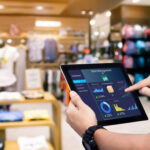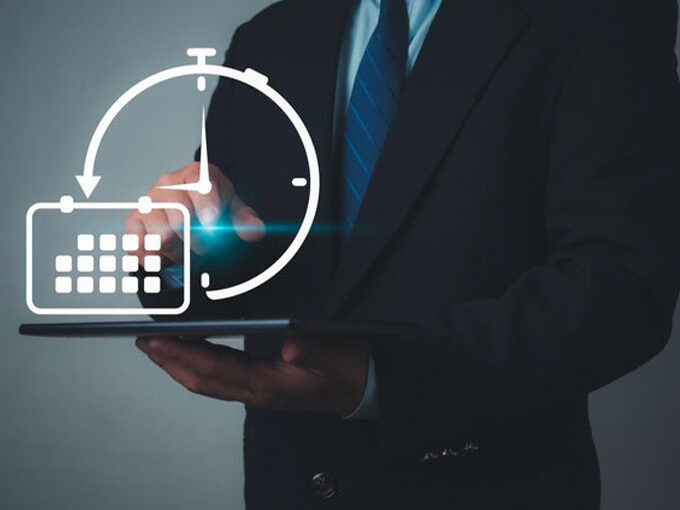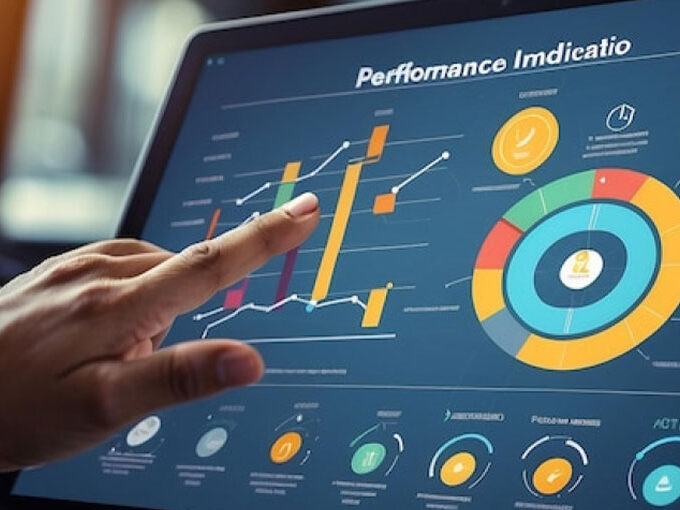In a retail landscape increasingly driven by data, companies seeking to outperform must invest in smarter tools. As buyer expectations evolve, identifying the top technologies used for retail execution and analytics has become essential.
Below are six of the most powerful innovations reshaping how brands and retailers plan, monitor and adapt. These are not hypothetical curiosities. they are actively being deployed across markets to elevate in-store performance, tighten execution and extract richer insights.
1. Artificial Intelligence and Machine Learning
Artificial intelligence (AI) and machine learning (ML) are redefining retail execution by transforming how data is analyzed, interpreted and acted upon. Retailers once relied on backward-looking reports, but AI now allows them to predict trends, optimize operations and respond dynamically to shifts in shopper behavior.
Predictive analytics can forecast product demand, automate inventory replenishment, and identify sales anomalies before they affect performance. Machine learning also powers prescriptive insights recommending which stores to prioritize, how to adjust pricing or when to launch promotions.
According to recent industry analyses, retailers that deploy AI and ML at scale experience measurable gains in forecasting accuracy and execution speed. However, experts emphasize the importance of data quality and transparency in preventing algorithmic bias and maintaining consumer trust.
Also read: Top 20 Business Apps for Retailers
2. Lidar and Digital Twin Modeling
Spatial precision is a growing frontier in retail analytics, and light detection and ranging (lidar) technology is leading the charge. By using laser-based sensors to capture detailed measurements of store interiors, lidar enables the creation of accurate 3D digital twins — virtual replicas of physical retail environments.
These digital models enable teams to test new layouts, visualize merchandising concepts and monitor planogram compliance before making physical changes. Lidar is also being used to map shopper movement and identify high-traffic zones, allowing brands to refine product placement and store design with exceptional accuracy.
For example, industry leaders such as Driveline Retail have adopted lidar-powered mapping through its SmartMap© solution, producing scalable, high-resolution store visualizations that streamline audits and drive more informed space planning. This combination of lidar and digital twinning marks a shift from static floor planning to data-driven spatial intelligence.
3. Computer Vision and Shelf Intelligence
Computer vision — the ability of machines to interpret and analyze visual information — has become one of the most powerful enablers of modern retail execution. Retailers can now use image recognition to monitor planogram compliance, detect stockouts and verify promotional displays automatically.
Advanced models such as YOLOv8 and YOLOv10, referenced in recent academic studies, allow systems to identify products on shelves with near-human accuracy and track shopper interactions in real time. This visual intelligence replaces manual audits with instant, scalable validation of in-store conditions.
Retailers like Carrefour have already deployed shelf-scanning robots and mobile applications to reduce human error and enhance reporting speed. Driveline Retail also integrates image recognition into its data collection processes, achieving over 95% accuracy in planogram audits and price verifications. The result is a faster, more objective view of retail compliance and a stronger foundation for performance analytics.
4. Mobile Location Analytics and Proximity Tracking
Understanding how shoppers move through stores has long been a challenge, but mobile location analytics (MLA) and proximity tracking have made this insight both precise and actionable.
By capturing anonymized Wi-Fi, Bluetooth or beacon signals from mobile devices, retailers can visualize foot traffic patterns, dwell times and congestion points across store zones. These insights inform everything from staffing decisions to promotional placement, enabling teams to design layouts that enhance flow and minimize bottlenecks.
Some systems even trigger real-time alerts or offers when shoppers linger in certain areas. While privacy regulations require transparency and anonymity, responsible implementations have proven highly effective. Retailers using MLA report better conversion rates and improved operational efficiency due to smarter, data-backed store management.
5. Augmented Reality and Immersive Experience Technologies
Augmented reality (AR) has rapidly evolved from a marketing gimmick into a meaningful tool for retail execution and analytics.
By overlaying digital information onto physical environments, AR helps both shoppers and store teams visualize products and layouts in new ways. Consumers can “try on” clothing virtually, preview furniture in their homes or interact with digital product tags for added context.
On the operations side, store planners can use AR to preview how a new fixture or signage would appear before installation, reducing trial-and-error costs. Data from AR interactions, such as which items shoppers view, how long they engage and what features they explore, feed into broader analytics systems.
Industry analyses from Intel and other research groups cite immersive shopping technologies as key to improving engagement, dwell time and brand differentiation. The same capabilities are now extending into store execution, where AR supports training, spatial visualization and layout validation.
6. Retail Media Networks and First-Party Data Platforms
Retailers are increasingly transforming into media platforms in their own right, harnessing their customer and store data to deliver targeted advertising and measurable in-store impact.
Retail media networks (RMNs) combine shopper analytics, digital signage and point-of-sale data to create closed-loop marketing ecosystems. Through RMNs, brands can buy sponsored placements, run personalized offers and directly tie ad exposure to in-store conversions.
For retailers, the benefits extend beyond revenue generation. These platforms deepen insight into shopper behavior and optimize retail execution in near real time. RMNs are among the fastest-growing digital investments in retail, offering both monetization and strategic intelligence.
When integrated with AI, computer vision and mobile analytics, retail media networks become part of a unified feedback system that continuously refines merchandising and campaign strategy based on live performance data.
Integrating the Stack: How These Technologies Work Together
These technologies are most powerful when combined:
- A digital twin built from lidar and shelf intelligence provides the spatial foundation.
- Computer vision continuously validates execution and updates the twin.
- AI/ML analytics layer atop processing data to detect trends, anomalies or prescribe actions.
- Mobile location analytics adds customer movement signals to contextualize performance.
- AR acts as both an engagement layer and a way to simulate changes without physical risk.
- Retail media and first-party data convert insights into monetizable actions and closed-loop feedback.
Also read: Top 5 Security Threats for Online Retailers
Implementation Risks and Best Practices
As with any large-scale transformation, integrating advanced retail technologies comes with challenges that extend beyond the technical layer.
Many retailers underestimate the organizational, ethical and operational complexities involved in bringing data-driven systems to life. While artificial intelligence, lidar and computer vision can generate immense value, their impact depends on careful implementation, continuous validation and responsible data governance.
Understanding the potential pitfalls and designing safeguards from the start ensures that innovation leads to measurable improvement rather than disruption or inefficiency. The following best practices outline how retailers can effectively and sustainably deploy these tools.
Data Quality and Engineering Overhead
Sophisticated models rely on clean, timely and integrated data from point-of-sale (POS) systems, inventory systems, foot traffic analytics and visual audits. Without robust extract, transform, load (ETL) pipelines, insights will be flawed and decision-making compromised. Establishing a unified data architecture supported by automated quality checks and version control helps ensure consistency and reliability across all analytics layers.
Change Management and Field Adoption
Technology alone cannot transform execution. Adoption on the ground determines success. These tools must naturally integrate into field teams’ daily workflows and reduce friction, rather than adding to it. Continuous training, clear feedback loops and mobile-first interfaces help employees adopt new systems more easily, rather than resist them, ensuring compliance and sustained performance improvements.
Privacy and Compliance
Tracking shopper movement and deploying visual analytics raises significant ethical and regulatory considerations. Avoiding the collection of personally identifiable information, anonymizing collected data and obtaining explicit opt-ins are essential to building consumer trust. Retailers should align with data protection frameworks such as the General Data Protection Regulation (GDPR) or California Consumer Privacy Act (CCPA) and conduct periodic privacy impact assessments to maintain compliance.
Scalability and Architectural Flexibility
A modular, cloud-native architecture enables retailers to deploy capabilities store by store, region by region, without disrupting existing operations. Early investments in scalable design prevent the need for costly rebuilds later on. Open application programming interfaces (APIs) and microservices-based architectures further allow seamless integration of future technologies as the ecosystem evolves.
Continuous Retraining and Validation
AI and machine learning models must be continuously retrained to reflect new store formats, product assortments and seasonal behaviors. Static models degrade over time, leading to inaccurate insights. Establishing an automated validation pipeline — including performance benchmarking and bias checks — ensures that systems remain accurate, fair and adaptive to real-world change.
Vendor Partnership and Ecosystem Alignment
Even as the market fills with specialized vendors, success depends on a cohesive technology ecosystem. Retailers benefit from integrating point solutions through a shared orchestration layer, which minimizes fragmentation and data silos. Partnering with providers who combine AI, spatial mapping and field execution under one platform enables organizations to scale innovation with consistency and control.
The Future of Retail Execution Lies in Intelligent Integration
The top technologies used for retail execution and analytics continue to evolve. The six options above — AI/ML and predictive analytics, lidar-based spatial modeling, computer vision/shelf intelligence, mobile location analytics, AR and retail media networks — are leading the charge.
Execution improvement is more than just about checklists and audits. It increasingly requires real-time intelligence, automation and spatial awareness. A unified platform can bring together multiple disciplines under one roof, bridging the gap between planning and field reality.
As you evaluate technology investments, look beyond individual components to focus on interoperability, field adoption, and a roadmap that combines short-term wins with strategic depth. With the right architecture and leadership, these technologies are incremental upgrades — they can redefine how you manage stores, engage customers and grow revenue in the age of data.










Leave a comment